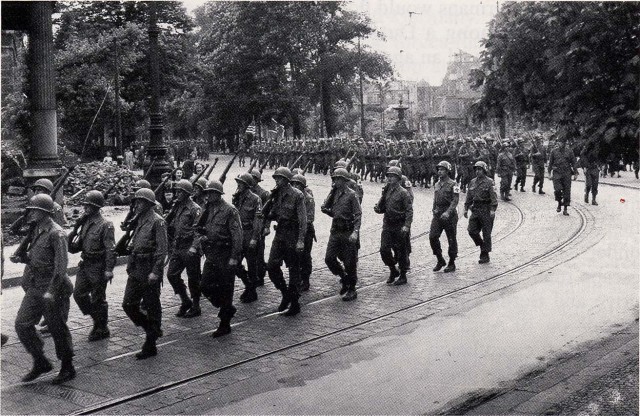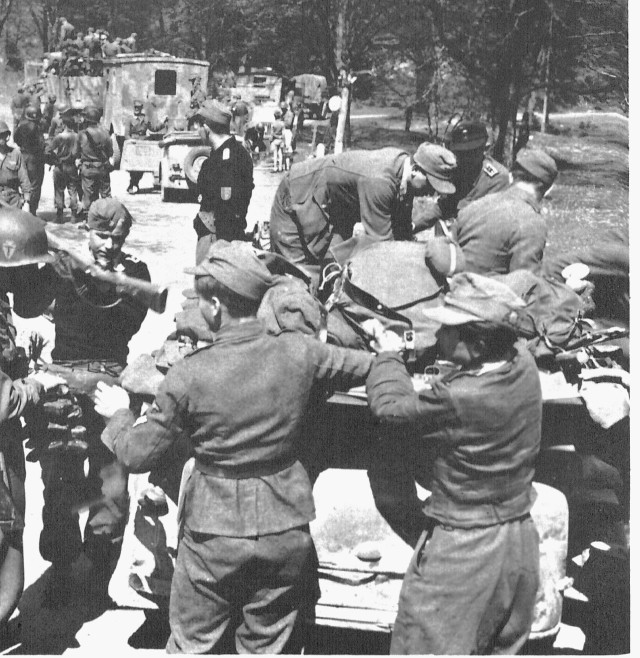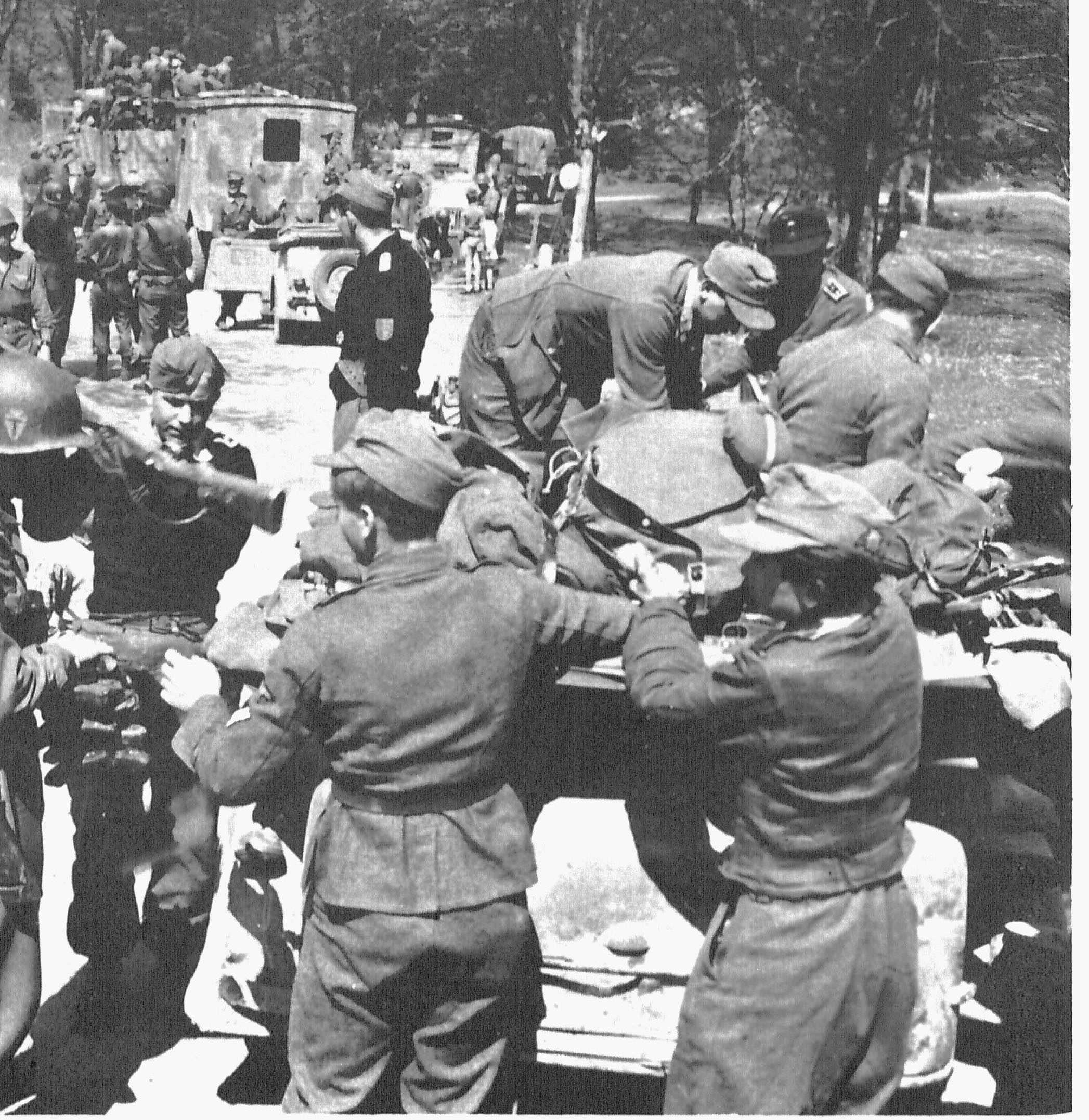WASHINGTON (Army News Service, May 5, 2010) -- World War II was the largest and most violent armed conflict in the history of mankind, but by the early spring of 1945, the future looked bright for Allied forces in Europe.
In January, the Allies had turned back the Germans' December counterattack in the Ardennes, in the famous Battle of the Bulge. The failure of this last great German offensive exhausted much of the Third Reich's remaining combat strength, leaving it ill-prepared to resist the final Allied campaigns in Europe.
Strategic setting
By mid-March, the Allies had pushed to the Rhine along most of the front, had seized an intact bridge at Remagen, and had even established a small bridgehead on the river's east bank.
In the east the Soviets had overrun most of Poland, pushed into Hungary and eastern Czechoslovakia, and temporarily halted at the German border on the Oder-Neisse line. These rapid advances on the Eastern Front destroyed additional veteran German combat units and severely limited Hitler's ability to reinforce his Rhine defenses. Thus, as the western Allies completed their preparations for the final drive into the heart of Germany, victory seemed within sight.
The supreme commander of the Allied Expeditionary Force Gen. Dwight D. Eisenhower had 90 full-strength divisions under his command, including 25 armored and five airborne, thus controlling one of the largest and most potent forces ever committed to the field of battle. The Allied front along the Rhine stretched 450 air miles from the river's mouth at the North Sea in the Netherlands to the Swiss border in the south.
Handshake at Rhine
Every unit along the Elbe-Mulde line was anxious to be the first to meet the Red Army. By the last week of April, it was well known that the Soviets were close, and dozens of American patrols were probing beyond the east bank of the Mulde, hoping to meet them. Elements of First Army's V Corps made first contact.
At 11:30 a.m. on April 25, a small patrol from the 69th Infantry Division met a lone Russian horseman in the village of Leckwitz. Several other patrols from the 69th had similar encounters later that day, and on April 26, the division commander, Maj. Gen. Emil F. Reinhardt, met Maj. Gen. Vladimir Rusakov of the Russian 58th Guards Infantry Division at Torgau in the first official link-up ceremony. After a nearly flawless thrust through the middle of Germany, the 12th Army Group had succeeded in splitting Hitler's forces in two.
Breakout from Rhine
While the 12th Army Group made its eastward thrust, its right flank was protected by Gen. Jacob Devers' 6th Army Group, which had the dual mission of eliminating any German attempt to make a last stand in the Alps of southern Germany and western Austria.
Lt. Gen. Alexander M. Patch's Seventh Army on Devers' left was to make a great arc, first driving northeastward alongside Bradley's flank, then turning south with the Third Army to take Nuremberg and Munich, ultimately continuing into Austria. The First French Army was to attack to the south and southeast, taking Stuttgart before moving to the Swiss border and into Austria.
The Seventh Army broke out of its Rhine bridgehead, just south of Frankfurt, on March 28, employing elements of three corps. The XV Corps' 45th Infantry Division fought for six days before taking the city of Aschaffenburg, 35 miles east of the Rhine, on April 3.
Elements of the VI Corps met unexpectedly fierce resistance to the south at Heilbronn, 40 miles into the German rear. Still, by April 11, the Seventh Army had penetrated the German defenses in depth, and was ready to begin its wheeling movement southeast and south. Thus, on April 15 when Eisenhower ordered Patton's entire Third Army to drive southeast down the Danube River valley to Linz, and south to Salzburg and central Austria, he also instructed the 6th Army Group to make a similar turn into southern Germany and western Austria.
Allies overrun Germany
Advancing along this new axis the Seventh Army's left rapidly overran Bamberg, more than 100 miles east of the Rhine, on its way to Nuremberg, about 30 miles to the south. As its forces reached the latter city on April 16, the Seventh Army ran into the same type of antiaircraft gun defense that the First Army was facing at Leipzig. Only on April 20, after breaching the ring of antiaircraft guns and fighting house-to-house for the city, did its forces take Nuremberg.
Following the capture of Nuremberg, the Seventh Army discovered little resistance as the XXI Corps' 12th Armored Division dashed 50 miles to the Danube, crossing it on April 22, followed several days later by the rest of the corps and the XV Corps as well.
Meanwhile, on the Seventh Army's right the VI Corps had moved southeast alongside the First French Army. In a double envelopment the French captured Stuttgart on April 21, and by the next day both the French and the VI Corps had elements on the Danube. Similarly, the Third Army on the 6th Army Group's left flank had advanced rapidly against very little resistance, its lead elements reaching the river on April 24.
End in sight
As the 6th Army Group and the Third Army finished clearing southern Germany and approached Austria, it was clear to most observers, Allied and German alike, that the war was nearly over. Many towns flew white flags of surrender to spare themselves the otherwise inevitable destruction suffered by those that resisted, while German troops surrendered by the tens of thousands, sometimes as entire units.
On April 30, elements of the XV and XXI Corps captured Munich, 40 miles south of the Danube, while the first elements of the VI Corps had already entered Austria two days earlier.
On May 4, the Third Army's V and XII Corps advanced into Czechoslovakia, and units of the VI Corps met elements of the Fifth U.S. Army on the Italian frontier, linking the European and Mediterranean theaters. Also on May 4, the city of Salzburg surrendered.
The XV Corps captured Berchtesgaden, the town that would have been Hitler's command post in the National Redoubt. With all passes to the Alps now sealed' however, there would be no final redoubt in Austria or anywhere else. In a few days the war in Europe would be over.
While the Allied armies in the south marched to the Alps, Montgomery's 21 Army Group drove north and northeast. The British Second Army's right wing captured Bremen. The bridgehead expanded rapidly, and by May 2, Luebeck and Wismar, 40 to 50 miles beyond the Elbe, were in Allied hands, sealing off the Germans in the Jutland peninsula.
Netherlands Airdrop
One corps of the First Canadian Army had reached the North Sea near the Dutch-German border, while another drove through the central Netherlands, trapping the German forces remaining in that country. However, concerned that the bypassed Germans would flood much of the nation and cause complete famine among a Dutch population already near starvation, Eisenhower approved an agreement with the local enemy commanders to allow the Allies to air-drop food into the country in return for a local cease-fire on the battlefield.
The ensuing airdrops, which began on April 28, marked the beginning of what was to become a colossal American-led effort to put war-torn Europe back together again.
Germany surrenders
By the end of April, the Third Reich's twilight was turning to night. Its armies in tatters, Germany retained only a small fraction of the territory it had conquered a few years before. Of the land still under Nazi control, almost none was actually in Germany.
With his escape route to the south severed by the 12th Army Group's eastward drive and Berlin surrounded by the Soviets, Adolf Hitler committed suicide on April 30, leaving to his successor, Admiral Karl Doenitz, the task of capitulation.
After attempting to strike a deal whereby he would surrender only to the western Allies, a proposal which was summarily rejected, on May 7 Doenitz granted his representative, Gen. Alfred Jodl, permission to effect a complete surrender on all fronts. The appropriate documents were signed on the same day and became effective on May 8.
Despite scattered resistance from a few isolated units, the war in Europe was over.
(Editor's note: This article consists of excerpts from the brochure "Central Europe," prepared by the U.S. Army Center of Military for the 50th Anniversary of World War II.)




Social Sharing